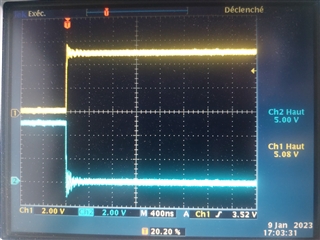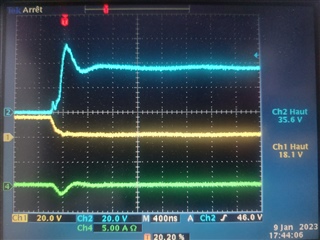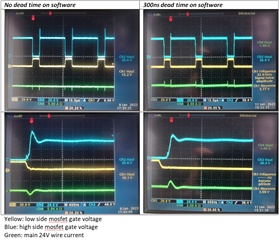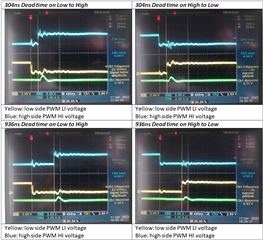Other Parts Discussed in Thread: LM5109
Dear Support,
I would need some help in a LM5109BMA Half-Bridge Converter design.
The LM5109 mounting: 2x PWM signals control the LM5109BMA inputs which drives 2x Power MOSFET (Idmax = 56A) and then the switching output voltage HS is filtered by an inductor and big capacitor to create a linear output voltage HS(LC) so I can adjust by software the HS(LC) voltage from 0 to 24VDC. LM5109BMA is supplied with 12VDC and the MOSFETs by 24VDC / 200W power supply:
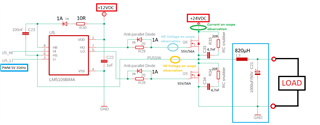
The application: I connect a load between HS(LC) voltage (adjusted to 16VDC for example) and ground and I increase smoothly the current consumption with a low load (see middle scope). The HO LO HS signals are stable and the 200W power supply current consumption is increasing to around 4A.
I increase the load again smoothly and suddenly the current is very high and signals unstable and the switching current presents 2 20µs peaks of 60A! This is too high from the 200W PSU. In normal condition the load is not consuming more than 8A when I connect directly the 24VDC PSU on it.
After the load is removed or reduced, the signals and converter are again stable and working fine:
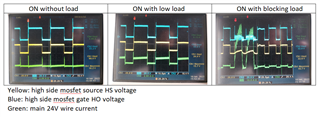
Do you have any idea of the reason of these 60A high current peaks? And how to correct?
Thank you in advance for your feedbacks.
Best Regards,
Julien


